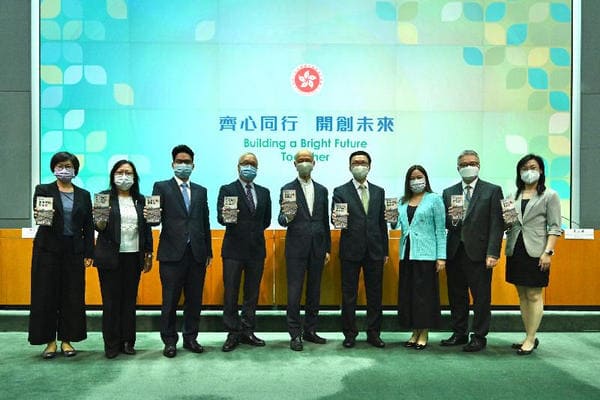
Hong Kong goes carbon neutral before 2050
In the combat against climate change, Hong Kong is one of the economies in the world committing to carbon neutrality by around 2050. With ambitious goals, Hong Kong has even pledged to do so before 2050. On October 8, 2021, the Secretary of the Environment, Mr Wong Kam-sing, announced Hong Kong’s “Climate Action Plan 2050”, which sets out a roadmap for taking decisive actions under four major decarbonisation strategies: net-zero electricity generation, energy saving and green buildings, green transport and waste reduction.
The lastest plan is an update of Hong Kong’s 2017 “Climate Action Plan 2030+” which first responded to the Paris Agreement. In the first plan, Hong Kong pledged that by 2030, the total carbon emissions would reduce by 26 to 36 per cent against the 2005 baseline. Hong Kong has been making rapid progress over the past years, and its carbon emissions were already about 20 per cent lower than in 2005 as of 2020. With the new pledge announced by the Chief Executive in the 2020 Policy Adress to achieve carbon neutrality before 2050, Hong Kong has laid out the Climate Action Plan 2050, which commits to a more radical medium-term target to reduce total carbon emissions of Hong Kong by 50 per cent against the 2005 level before 2035.
Being the fourth major environmental policy plan launched by Hong Kong in 2021, the Climate Action Plan 2050 brings together all policies, plans, targets and actions. As currently about two thirds of Hong Kong’s greenhouse emissions come from electricity generation, followed by 18 per cent from the transport sector and 7 per cent from waste, Hong Kong’s major decarbonisation efforts will target these three sources.
In order to achieve net-zero emissions for electricity generation, Hong Kong will first tackle a change in the fuel mix of the local power plants, with an interim target for exiting from coal energy by 2035 and replacing it by renewable energies. In tandem with this, Hong Kong aims at reducing electricity consumption of commercial buildings by 30 to 40 per cent and that of residential buildings by 20 to 30 per cent from the 2015 level by 2050.
On the area of promoting green transport, the development of electric and other new engergy public transport and commercial vehicles will be promoted, with a view to ceasing new registration of fuel-propelled and hybrid private cars in 2035 or earlier. As for carbon emissions from waste, Hong Kong will develop waste-to-energy facilities, support residents to reduce waste and implement a waste-to-resources infrastructure to gradually reduce landfills.
In the next 15 to 20 years, the HKSAR Government will devote about HK$240 billion (EUR 27 billion) to take forward the various measures on climate change mitigation and adaptation. As an international financial centre with a huge market and world-class regulatory framework, Hong Kong is well placed to develop its city into a green finance hub. The Government has, for instance, recently announced the successful offering of US$3 billion (EUR 2.6 billion) worth of green bonds denominated in USD and EUR, and another offering of RMB5 billion (EUR 691 million) offshore renminbi green bonds, under the Government Green Bond Programme in November 2021. By serving as a prime financing platform for green enterprises and projects, Hong Kong has “a significant role to play in addressing climate change”, as Mrs Carrie Lam pointed out in her Policy Address 2021. Combating climate change is a long-term task that requires unwavering efforts. The Secretary for the Environment, Mr Wong Kam-sing also commited that Hong Kong will, in line with the spirit of the Paris Agreement, conduct a review about every five years to keep up with the times.
The full version of Hong Kong’s “Climate Action Plan 2050” can be downloaded
here.
